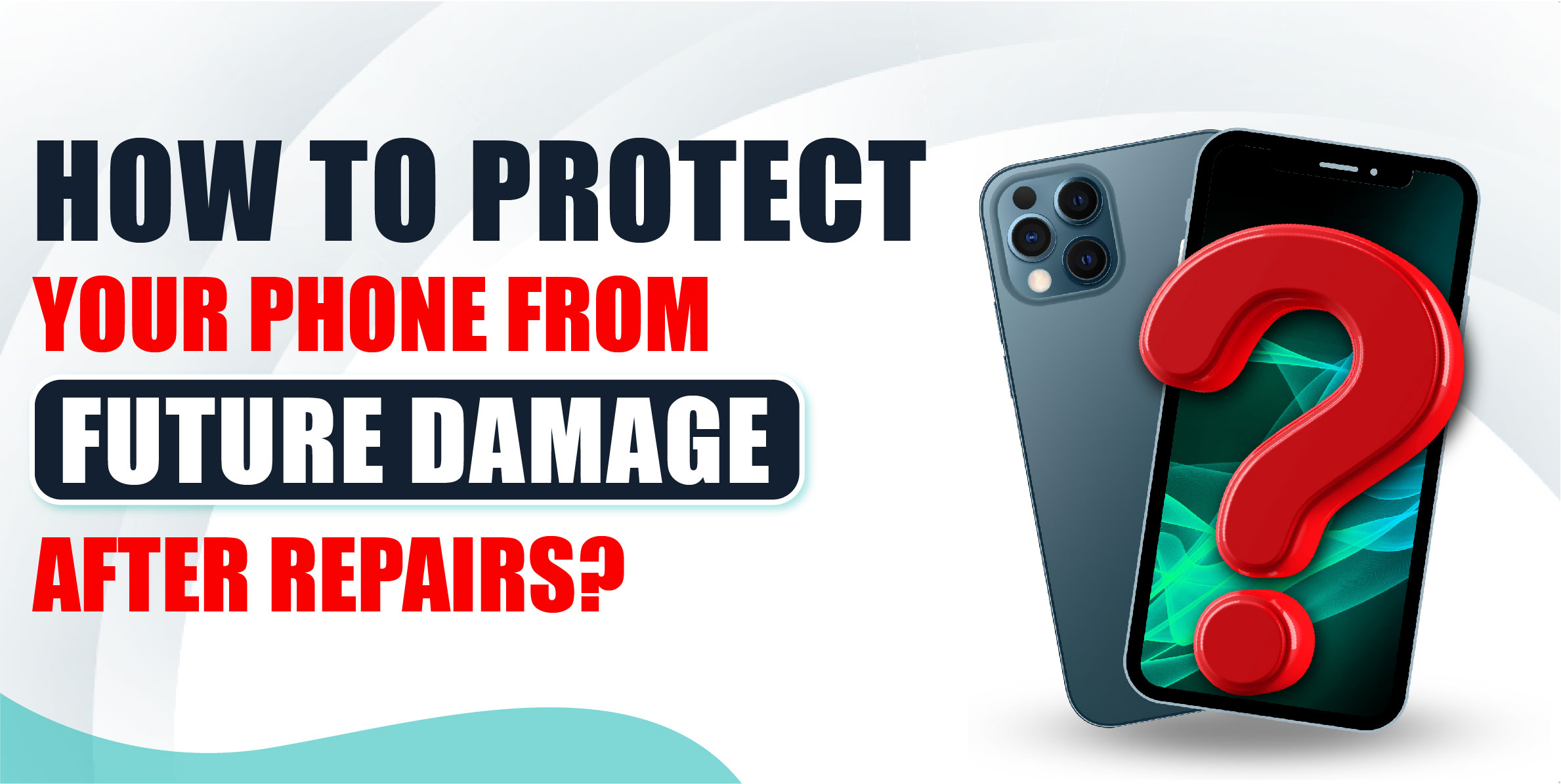
Once your phone has been repaired, whether it’s a screen replacement, battery swap, or fixing water damage, the last thing you want is for it to suffer further harm. Proper care and preventive measures can significantly extend your phone's life and ensure it remains in good working condition. Here’s how to protect your phone from future damage after repairs.
1. Invest in a High-Quality Case
One of the simplest yet most effective ways to protect your phone is by investing in a high-quality case. After a repair, your phone might be more vulnerable, especially if it’s undergone significant damage before.
A sturdy case can absorb shocks and prevent scratches, cracks, and other physical damage. Look for cases that offer both durability and style, such as those made from tough materials like silicone, rubber, or hard plastic. If your phone was repaired due to a drop or fall, consider a shockproof case for added protection.
2. Apply a Screen Protector
A screen protector is essential, especially if your phone's screen has been recently replaced. Even if your phone hasn’t undergone screen repair, a screen protector is a good investment to prevent cracks and scratches. Tempered glass protectors are particularly effective as they are more resistant to impact compared to plastic ones.
They can save your screen from shattering in the event of a drop and also prevent minor scratches from everyday use. Additionally, screen protectors are relatively inexpensive, making them a cost-effective way to safeguard your phone.
3. Be Mindful of Water Exposure
If your phone has been repaired for water damage, it’s crucial to be extra cautious around water. Even if your phone is labeled as water-resistant, prolonged exposure to water can still cause damage, especially after repairs.
Avoid using your phone near water sources, such as swimming pools, bathtubs, or sinks. If you must use your phone in a wet environment, consider using a waterproof case to provide an extra layer of protection. Remember, water damage is one of the most common causes of phone malfunctions, and taking precautions can save you from future repair costs.
4. Handle Charging with Care
Improper charging habits can lead to battery issues, even after a battery replacement or repair. Always use the manufacturer’s recommended charger and avoid using cheap, third-party chargers that could damage your phone's battery. Overcharging your phone or using it while it’s charging can also cause long-term damage.
It’s best to unplug your phone once it’s fully charged and to avoid letting it drop below 20% before recharging. Following these tips can help maintain the health of your phone’s battery and prolong its lifespan.
5. Avoid Extreme Temperatures
Extreme temperatures, whether hot or cold, can wreak havoc on your phone, especially if it’s already been repaired. High temperatures can cause battery swelling, while cold temperatures can lead to battery drainage and screen malfunctions. Always store your phone in a cool, dry place, and avoid leaving it in direct sunlight, such as on a car dashboard.
During cold weather, keep your phone in your pocket or inside your coat to maintain a stable temperature. Protecting your phone from extreme conditions will help prevent additional damage and ensure it continues to function properly.
6. Regularly Clean Your Phone
Dirt, dust, and debris can accumulate in your phone’s ports and buttons, causing them to malfunction over time. After a repair, it’s important to keep your phone clean to prevent future issues. Use a soft, lint-free cloth to wipe down the exterior of your phone regularly.
For more thorough cleaning, use a small, soft brush to remove dust from the charging port and speaker grills. Avoid using harsh chemicals or abrasive materials that could damage your phone’s surface. Regular cleaning not only keeps your phone looking new but also ensures it functions smoothly.
7. Be Cautious with Software Updates
After repairs, it’s important to keep your phone’s software up to date, but with caution. Sometimes, new software updates can cause issues on phones that have been previously repaired, especially if non-original parts were used.
Before updating, ensure that the update is compatible with your device and that it won’t interfere with any repaired components. It’s also a good idea to back up your data before installing any major updates. This precaution will help you avoid potential software conflicts and data loss.
Conclusion
Protecting your phone after repairs requires a combination of physical protection, careful handling, and regular maintenance. By investing in a quality case and screen protector, avoiding extreme conditions, handling charging with care, and keeping your phone clean, you can significantly reduce the risk of future damage.
Taking these preventive steps not only ensures your phone remains in good condition but also saves you from the inconvenience and cost of further repairs. Remember, a little extra care goes a long way in maintaining your phone's longevity and performance.